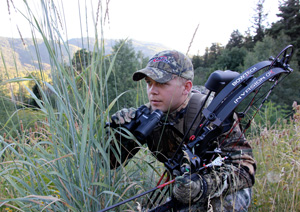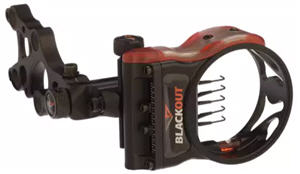
 Today's archery market consists of numerous compound bow manufacturers, making it difficult to know which bow is best for you. All compound bows, regardless of name and make, have similarities that you need to consider before buying. In this compound bow buyer's guide for beginners, we're going to look past the propaganda and consider the core aspects you need to know before buying a compound bow.
Today's archery market consists of numerous compound bow manufacturers, making it difficult to know which bow is best for you. All compound bows, regardless of name and make, have similarities that you need to consider before buying. In this compound bow buyer's guide for beginners, we're going to look past the propaganda and consider the core aspects you need to know before buying a compound bow.
With anything that you buy, you must first consider application. Why are you buying a compound bow? Are you into hunting or target shooting? The application calls for different specifications. To start, we need to fit the bow to the shooter.
Let's become familiar with a couple very important terms for fitting the bow to the shooter: draw length and draw weight.

The Compound Bow Draw Length
Compound bows will draw only a certain distance before the string stops. This distance is the draw length. Most compound bows have a range for draw length and can be adjusted to fit the shooter for a comfortable shooting form. It's very important that shooters find their appropriate draw length for multiple reasons.
- If draw length is too short, it can hurt accuracy since maintaining reference points for aiming becomes more difficult. At full draw, shooters have an anchor point, and too short of a draw length leads to a floating anchor point and therefore inconsistency between shots. Too short of a draw length also can lead to increased torque on the bow which contributes to inaccuracy.
- If draw length is too long, archers have the natural tendency to lean their head back in an attempt to see properly through the peep bow sight, a small device used for aiming. This will cause a host of other problems such as bad back posture and therefore shooting form. Improper shooting form can add tension and torque to the bow, leading to inaccuracy. To make matters worse, this will inevitably cause the shooter's bow arm, or arm holding the bow, to extend more than it needs, putting the inner elbow right in the path of the string. Ouch!
- Proper draw length. There are endless sources that explain how to predict or measure draw length. For the beginning archer, it's smart to visit your local Bass Pro Shops archery department or other qualified archery shop to measure draw length. Having the correct draw length will help with form, consistency, accuracy and safety.

selecting a bow, as hunters have to hold at
full draw while taking aim at their game.
Understanding a Compound Bow Draw Weight
When it comes to draw weight, the most important thing to understand is matching your strength to the bows draw weight. Heavier draw weights produce faster speeds, but more important than speed is finding a weight that you can hold at full draw steadily without too much stress. Draw weight is the peak weight you pull as the string is being drawn back before let-off. Compound bows have what's called let-off, which is a way to lessen the weight archers have to hold at full draw. So, when considering draw weight, also look for let off percentage.

Climbing Treestand
Selecting draw weight— What archers need to consider, hunters especially, is the potential to be drawn back for long periods of time while waiting for an opportune shot. Or, drawing in adverse conditions, as draw weights that are too heavy are hard to hold for a long time and are even harder to draw after a long sit in a hunting treestand on a cold winter day. So, match the weight to your strength. When testing bows, see if you can draw and hold the bow for a full 20-30 seconds without shaking. If you can, then the draw weight should be appropriate for you. Another important point is accuracy, having a draw weight that you can easily draw and hold will allow you to have a steadier and more accurate shot.
Choose the Right Bow Length for You

Targets
When choosing a bow, length is an important factor for maneuverability and stability. Again, what is the application? If hunting, shorter bows are more controllable in the field or in the treestand. If target shooting, many archers suggest that longer bows are more accurate. Bow length is measured from axle to axle, and while there is no set length, hunting bows are generally shorter, around 30 to 32 inches. Target shooting bows will be significantly longer.
There's no right or wrong answer, it comes down to personal preference and application for the end user.

to-shoot in a package, while
others require purchasing
accessories separately.
The Speed and Noise of Your Compound Bow
Common among archers is talk about speed and noise. Modern bows are capable of shooting upwards of 350 feet-per-second or more. Arrow speed is important because it also translates to kinetic energy, or knock-down power. Bows able to shoot heavy arrows at fast speeds will provide greater penetration potential, which is desired when hunting. Faster arrows also shoot flatter, which aids in downrange accuracy.

Vibration Dampeners
Also important to archery hunters is noise. A quiet bow is generally desired over a loud bow. When a bow fires, energy stored in the bows working components is transferred to the arrow, but some of that energy isn't transferred and is lost as vibration, which causes sound. Thanks to new innovative designs, energy loss is minimized and compound bows accessories called vibration dampeners like the Sims LimbSaver Super Quad can absorb leftover vibrations making for a quiet shot.
Bare vs. Ready-to-Shoot Compound Bows

For the beginning archer, it is important to understand the difference between a bare bow and a ready-to-shoot bow. The compound bow is designed to use accessories when shooting an arrow. For example, an arrow rest, a bow sight and an bow quiver to start. Ready-to-shoot bows that come in packages have these necessary accessories already on the bow. However, if you buy a bare bow then you'll have to outfit that bow with the required accessories. Either way is fine, but realize that a bare bow will require some additional work and money before going out and shooting.
Overall, this buyer's guide only touches on the basics that should be considered when purchasing a compound bow. Buyers can consider multiple other factors such as brace height, limb and riser design, cam types and much more when buying compound bows. However, having a basic understanding of the concepts described in this buyer's guide will help you in buying your first, and hopefully not last, compound bow.
Also Read: Arrow and Broadhead Buyer's Guide | Archery Accessories You Shouldn't Forget to Buy
- 182213 views

